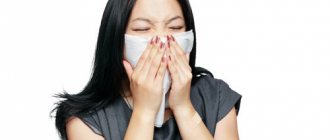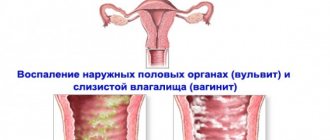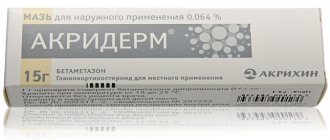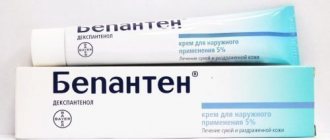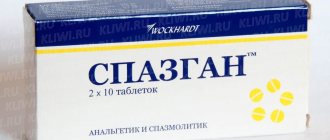Bedsores. What is this?
Bedsores
difficult and complex problem. Many different materials and articles are devoted to this topic, but most of them are intended for medical personnel and specialists. We will try to talk about this as simply and clearly as possible. We hope that our information will help bedridden patients and caring relatives.
Bedridden patients and relatives caring for loved ones at home face a lot of problems when bedsores first appear. Few are prepared for their occurrence. Usually, information, advice, qualified consultation, support and assistance become necessary as air. A large number of questions arise. What are bedsores? Why did they appear? What causes them? What are they? How are they formed? How can it be avoided and prevented? Who treats bedsores? How to treat? How to treat? How to treat at home? How to treat bedsores? What ointment or dressings should I use? Is it possible to use folk and home remedies in treatment? How to understand the variety of treatment and care products offered? Do you need a special bed? Do you need an anti-decubitus mattress? Do I need to call a doctor or nurse to my home? Do you need a nurse? How to properly organize care and treatment? How to cure bedsores? How to get rid of bedsores? What to do? And many, many, many others...
This is not taught at school and university unless you are a doctor, paramedic or nurse. Even after training, not every health care professional can answer all of these questions with confidence. Life sets tasks and forces them to be solved quickly. A bedridden patient develops areas of redness and damage to the skin, pain, intoxication, weeping, increased body temperature and an unpleasant odor. Relatives have new worries and concern for their loved one grows. The list of problems is growing. With the appearance of bedsores, the quality of life of not only the bedridden patient, but also those who are next to him and care for him suffers. Logic dictates that accessible outpatient or inpatient qualified medical care is needed. However, practice shows that clinics, doctors at the place of residence, patronage services and even hospitals are not always able and ready to provide the necessary, high-quality care. We will try to help you and answer your questions.
Call a surgeon at home by phone.
Call a surgeon at home
Bedsore
(ulcer, pressure injury, pressure ulcer, decubitus ulcer, bedsore) - local damage to the skin and (or) underlying tissues. Bedsores are formed as a result of pressure or a combination of pressure with other damaging factors (friction, shear, moisture and others) and are usually located over bony prominences (sacrum, heels, ankles, elbows, sit bones, tailbone, hip joints, knee joints, shoulder blades, spinous processes of the spine, iliac crests, ankles, forehead and back of the head). There are also bedsores on the buttocks, ears, scrotum and even on the tip of the nose.
Weakened bedridden and sedentary patients (wheelchair users) with impaired blood circulation, sensitivity (stroke, spinal cord injuries, spinal patients, after neurosurgical operations, paresis, paralysis, multiple sclerosis), concomitant diseases (diabetes mellitus, Alzheimer's disease, Parkinson's disease, dementia, oncology , ALS - amyotrophic lateral sclerosis, renal failure) and after injuries (coma, hip fracture, pelvic fracture, skeletal traction), more often than others suffer from this problem.
There is a high risk of bedsores in people with severe mental illness (schizophrenia, severe depression and others). A significant role in the occurrence and development of local damage to the skin and underlying tissues is played by improper care, urinary and fecal incontinence. Bedsores are a very unpleasant, dangerous and expensive complication that worsens the quality of life, the patient’s condition and prognosis, slows down the treatment process, and requires additional care, medical supervision and expenses. This complication must be kept under control.
Causes of necrosis
Before we move on to talking about the classification of bedsores, we will learn in more detail about the reasons that cause them:
- Tissue compression. Every cell in the body lives on oxygen and nutrients. They reach it along with the blood through the capillaries. Through the lymphatic and blood vessels, waste products are removed from the cells. If a person remains in one position for a long time, the bone tissue comes into contact with a hard surface, capillaries and nerves are pinched. Nutrients and oxygen do not enter the cells, and processed substances are not removed from them. They accumulate and negatively affect healthy cells, leading to their death. If help is not provided to the patient in time, the process becomes irreversible.
- Tissue shift. All conditions are created for patients in the hospital. There are special beds that help raise the upper body. This relieves stress from the cervical spine. But in order to prevent the occurrence of bedsores, it is necessary to monitor the patient’s feet. They must have support. Otherwise, the body will begin to slide. Tissues that lie deep will move relative to the motionless skin. The blood vessels become kinked and blood clots form, which can rupture. Clamping of nerve endings provokes a decrease in sensitivity in areas of necrosis. Therefore, it is difficult to diagnose the onset of the development of complications.
- Friction. Rough clothing, folds in the bed, etc. can cause friction. The protective skin layer wears off, causing damage to the skin. Such damage can also occur if bed linen is changed incorrectly. You cannot pull the sheets out from under a motionless person.
- Skin moisture. Constant wetting causes a process called maceration. It provokes a breakdown of communication between superficial cells and then those lying deeper.
High body moisture increases friction between the skin and the surface. This, in turn, leads to the appearance of microtraumas. The skin begins to thin and peel off.
In order to understand what criteria lie in determining the classification of pressure ulcers, it is important to understand the causes of this complication and the characteristics of its development. That's why we talked about the factors that cause necrosis.
Stages. Categories
Bedsores are divided into stages (categories)
There are four main stages (categories). And two additional ones. The classification is proposed by the European Pressure Ulcer Advisory Panel (EPUAP) and the American National Pressure Ulcer Advisory Panel (NPUAP). Stages and categories are necessary to understand the severity, depth of tissue damage and make treatment decisions. They help you choose the right treatment algorithm and decide on the following questions. How to carry out treatment and care? When is surgery necessary? Which modern therapeutic dressings to choose?
Bedsores are often difficult to diagnose. Sometimes it is very difficult to distinguish them from simple contact dermatitis or diaper rash. It is very important to correctly understand and establish a diagnosis, since prevention, treatment and care regimens may differ.
Stage 1
Initial stage. Redness (hyperemia, erythema) is persistent, does not go away and does not fade when pressure is removed, and is located above the bony protrusion. Sometimes it is not very noticeable. The area suspected of developing a bedsore may be a different color and different from the surrounding tissue (ashy, bluish or purple). Stage (category) 1 is a signal that a bedridden or sedentary patient is already at risk for the formation of deeper and more severe bedsores!
Stage 2
Damage to the surface layers of the skin (epidermis and dermis). A bedsore looks like a shallow open wound, ulcer, erosion with a red or pink bottom. There may be a superficial scab (crust) or a coating of fibrin (fibrinous plaque). At this stage, changes can be in the form of a bubble, which is filled with serous (transparent) or sanguineous (reddish) contents. Sometimes this bubble ruptures in the form of exfoliated and wrinkled epidermis (the surface layer of the skin).
Stage 3
At this stage, local damage (necrosis-death) occurs to all layers of the skin. Subcutaneous fatty tissue is visible in the wound. The bones, tendons and muscles are covered, not exposed. There may be scab (crust) or necrosis (dead tissue) on top. The edges of the wound are undermined. There may be pockets, streaks with purulent discharge and fistula tracts.
Stage 4
The most difficult stage. Tissue damage (necrosis - necrosis) of all layers of skin and subcutaneous tissue. Unlike the third stage, deep-lying tissues and structures (fascia, tendons, muscles, bones and joints) are damaged and subject to a purulent-necrotic process (suppuration and necrosis). Blood circulation in the affected area is impaired. The wound is partially or completely covered with black necrotic masses (dead tissue) or eschar. Deep pockets, weeping, streaks with purulent discharge and fistulous tracts are characteristic of this stage. Wet necrosis (dead tissue) of a bedsore can cause intoxication and sepsis. Bone structures and joint capsules may gape in the wound, which makes osteomyelitis possible. Osteomyelitis is a severe complication (suppuration, necrosis and sequestration-rejection of bone tissue).
Stage (category): unclassified pressure ulcer.
Deep necrosis (death) of tissue in which the bottom of the wound may be covered with plaque (yellow, yellow-brown, grey, green, brown or black) and/or a scab-crust (brown or black). It is not possible to accurately stage the disease until necrosis (dead tissue) and/or plaque is removed.
Stage (category): suspected deep tissue damage
A local focus of tissue damage of a dark color (purple or burgundy) with clear boundaries against the background of normal, unchanged skin. It may be in the form of a dark hematoma (bleeding) due to damage to soft tissues as a result of their compression and/or displacement.
How to treat bedsores in bedridden patients at earlier stages?
The treatment itself must correspond to the stage of the disease. In the initial stages of bedsores, even when there are open wounds, treatment at home is possible. When the skin turns red, it is enough to use protective creams with zinc and bandages with a wound-healing cream. Therapeutic dressings actively influence the wound (cleanse pus and necrosis, stimulate tissue regeneration) and at the same time maintain optimal conditions for moist healing. In this case, the following are excluded from treatment: potassium permanganate, iodine, brilliant green and hydrogen peroxide. These products cause tissue burns and do not help healing well. Treatment begins only after first cleaning the bedsore from necrotic tissue and pus using special means. Bandages mean not only the usual textiles (gauze, mesh, non-woven fabric), but also films, sponges, hydrocolloids, gels and their combinations. Such dressings drain the surface and maintain an optimal microclimate.
Deep bedsores of the 4th degree (on the tailbone, buttocks, heels, etc.), when the wound is covered with a crust, must be treated using wipes with a special solution.
They help to first transfer the necrosis to a wet state. And then they begin treatment. Malysheva Tatyana Paramedic of the highest category
Prevention
The development of bedsores can be predicted with high probability and measures can be taken in advance. There are special scales for calculating the risk of this problem (Norton, Waterlow, Braden, Medley and others). If, according to all calculations, the probability is high, then it’s time to engage in active prevention of bedsores.
Waterlow scale for assessing the risk of developing pressure ulcers
Floor
Male 1 Female 2
Age
14 – 49 1 50 – 64 2 65 – 74 3 75 – 80 4 81+ 5
Body mass index (BMI-BMI) Weight-height indicator (weight in kg/height square in meters)
Average – BMI (body mass index) 20-24.9 0 Above average – BMI 25-29.9 1 Obese – BMI > 30 2 Below average – BMI < 20 3
Incontinence
Full control/catheterization 0 Urinary incontinence 1 Fecal incontinence 2 Dual incontinence (feces and urine) 3
Skin condition
Healthy 0 Tissue paper (thin and brittle) 1 Dry (flaking, flaking) 1 Edema (pasty) 1 Sticky (wet to touch)/fever 1 Discoloration, pale (bruises, mottled) 2 Damaged (ulcerations, ulcers, wounds ) 3
Mobility
Fully mobile 0 Restless/nervous/fussy 1 Apathetic (sedated/depressed/reluctant to move) 2 Limited mobility (limited due to severe pain or illness) 3 Bedridden (unconscious/unable to change position/in traction) 4 Confined to the chair (it is not possible to leave the chair without assistance) 5
Nutrition
Unplanned weight loss in the last 3-6 months <5% points 0, 5-10% points 1, >10% points 2 0-2 Body mass index (BMI) >20 points 0, BMI 18.5-20 points 1, BMI < 18.5 points 2 0-2 No food intake > 5 days 2
Special risks – Tissue nutritional disorders
Multiple organ damage/multiple organ failure/terminal cachexia 8 Damage or failure of one organ (eg heart, kidney, lungs) 5 Peripheral vascular disease 5 Anemia 2 Smoking 1
Special risks – Neurological deficits – neuropathy
Diabetes/ multiple sclerosis/ cerebrovascular accident/ motor/ sensory/ paraplegia Maximum 6 points 4-6
Special Risks - Surgery/Injury
On the operating table > 6 hours 8 Orthopedic surgery/below the waist/spine (up to 48 hours after surgery) 5 On the operating table > 2 hours (up to 48 hours after surgery) 5
Drug therapy
Cytostatics, anti-inflammatory, long-term/high dose steroids. Maximum 4 points 4
Sum of points = ______________
Sum of points
10+ (10-14 points) – risk of bedsores
15+ (15-19 points) – high risk
20+ (20 or more points) – very high risk
Bedsores are easier and cheaper to prevent than to treat and care for them. First of all, this is a problem of care. If everything is properly organized, the risk of the occurrence and spread of ulcers is significantly reduced. Before starting treatment, it is necessary to resolve all issues regarding the organization of prevention and care for the patient.
Five principles for preventing pressure ulcers:
- Removing pressure (functional bed, anti-decubitus mattress, inflatable rings, changing body position every 2 hours)
- Hygiene. Constant, regular and proper care (skin care, especially in areas of increased risk of bedsores)
- Organization of daily routine and nutrition (procedures, dressings, time and diet of feeding)
- Activation of the patient (sitting down, breathing exercises, physical therapy)
- Doctor consultations and medical staff supervision
Treatment of bedsores. Bedsore Care
Proper care is the basis and key to successful treatment. You must be prepared for the fact that the cleansing and healing of a bedsore can take many weeks, many months and even years. They can become stale. Very often it seems that bedsores are a hopeless and practically insoluble problem. But that's not true. Yes, its solution requires a lot of mental, physical and material costs. Yes. This is hard. But, we are able to provide, if not a complete cure, then good care and a normal quality of life for a bedridden person with bedsores. Any person deserves this. Each of us needs attention, care and love, especially in such a difficult situation. The most important thing is patience, knowledge and action.
There are two news, bad and good.
Bad news. Unfortunately, there is no universal treatment regimen, remedy, ointment or bandage for everyone. Bedsores are all different. They are in different stages and phases of the wound process. They have different sizes. Each bedridden patient has his own age, individual general condition, concomitant pathology, conditions and quality of care. There is no panacea for bedsores.
Good news. There are many modern care, treatment and dressing products, the individual combination of which can help cope with the problem. Their correct and timely use requires knowledge and qualified or specialized medical care. In order to help a loved one, you need to go through this long and difficult path with him, step by step. It is difficult to immediately create ideal conditions, error-free care and solve all problems at once when the prevention and treatment of bedsores is carried out at home. Daily systematic efforts and activities under the supervision of a physician are required to improve the process of care, prevention and treatment. This will help clean and heal existing bedsores and prevent new ones from appearing. The most important criterion for proper care and treatment is the desire to provide the kind of help that we would like to receive ourselves...
Please do not self-medicate. If there is no proper medical supervision, then severe complications are possible (cellulitis, purulent arthritis and osteoarthritis, osteomyelitis, pneumonia, bleeding, sepsis and death). For proper treatment and care, it is necessary to have a doctor monitor the cleansing of the wound and its healing. The doctor must examine the patient, assess the condition of the patient and the wound. It must be borne in mind that if cleansing and healing does not occur as expected, then it may be necessary to change the treatment regimen, decide on surgery and change the dressings. These important decisions must be made by a doctor. Surgeon. The costs, losses, complications, dissatisfaction and harm of inappropriate self-medication can be severe and sometimes distressing. The cost of mistakes in the treatment of pressure ulcers is very high.
It is very important to organize the following activities under the supervision of a doctor:
- Prevention (5 basic principles for preventing bedsores)
- Prescriptions and monitoring of therapy (drugs, antibiotics and other medicines)
- Analysis, elimination and control of factors that interfere with the cleansing and healing of bedsores
- Organization of dressings at home (use of gloves, clean sterile instruments and (or) disposable dressing kits)
- Cleansing the wound and removing necrosis (dead tissue). Sanitation (washing the wound)
- Skin care in the wound area. Wound care. Wet wound therapy (modern dressings, vacuum therapy NPWT or VAC-therapy)
- Monitoring of complications (observation, early detection, treatment and timely hospitalization)
- Plastic surgery (interventions) to close wounds after they have been cleansed
In the first stage
there is no particular need for surgical assistance. It is very important to focus on preventing further development of the process and the occurrence of new local damage. It is especially important to increase surveillance of areas where bedsores appear most frequently over bony prominences. The main task is to protect the altered skin from pressure, exposure to damaging factors and infection. Care for stage 1 bedsores is performed using modern products for nourishing, toning and protecting the skin (Menalind). The affected areas can then be covered with clear, breathable polyurethane films or hydrocolloid dressings for prevention.
In the second stage
there is a need for consultation with a surgeon, surgical treatment and organization of the dressing process. The surgeon removes or cuts off the exfoliated epidermis (surface layer of skin). Then it cleans and sanitizes (washes) the wound or erosion. Modern innovative dressings can be used to clean, heal and care for the wound at this stage. They are selected based on the phase of the wound process, the condition of the wound, the quality and level of exudation.
In the most severe third and fourth stages
A complete, high-quality surgical manual is required. Necrosis (dead tissue) of the skin, subcutaneous tissue, muscles and bone structures, which have begun to separate from living tissue and be rejected, is preferably removed surgically. Removing wet necrotic (dead) tissue, opening, sanitation of purulent leaks and cavities allows you to quickly clear a bedsore and reduce intoxication.
Surgical assistance (operation - necrectomy) significantly speeds up the process of cleansing and then healing of the wound. But it is very important to remember that complete excision of all dead tissue during surgical treatment is not always possible or advisable. When trying to remove dead (necrotic) tissue in deep bedsores as radically as possible, heavy bleeding is possible!
To completely cleanse wounds, you can use traditional water-soluble ointments (Levomekol, Levosin), enzymes (Proteox T, Proteox TM, Trypsin, Chymotrypsin, Iruksol) and modern innovative interactive dressings (TenderWet - TenderVet and TenderWet Plus - TendrVet plus, HydroClean - HydroClean and HydroClean Plus - HydroClean Plus, Sorbalgon - Sorbalgon, Sorbalgon T - Sorbalgon T, Biatain Alginate - Biatain Alginate, Suprasorb A - Suprasorb A, Melgisorb - Melgisorb, Hydrosorb Gel - Hydrosorb gel, Atrauman Ag - Atravman AG with silver, Physiotulle Ag - physiotulle with silver).
Modern dressings are many times more effective than their traditional predecessors.
After surgical removal or excision of necrotic (dead) tissue and cleansing, the main task is proper wound care (creating a moist physiological environment, absorbing secretions and preventing drying). In the stages of wound healing and epithelization, you can use traditional means that accelerate healing (Vinilin, Actovegin) or modern therapeutic dressings (Hydrocoll, Branolind N with Peruvian balsam, Grassolind, Hydrotull, Lomatuel H, HydroTac - HydroTak and others).
To speed up the healing of deep wounds and evacuate heavy exudate, the best choice is innovative methods, such as vacuum therapy (NPWT or VAC-therapy). Vacuum therapy is the most modern, highly effective method of treating acute and chronic wounds using negative pressure (Vivano, Suprasorb SNP, Renasys Go, ACTIV.AC Therapy System and others).
If a bedsore, after complete cleansing and dressings, does not heal on its own for a long time, does not close or tighten (long-term non-healing wound, chronic wound), then it can be closed with the help of plastic interventions. Such operations allow you to fully close the wound defect. Relapse (reappearance of a bedsore) can be avoided only with good, complete, high-quality care in the postoperative period in compliance with all the basic principles of prevention.
Preventive measures
All procedures must be started from the first day of illness. Prevention of bedsores must be carried out with the utmost care and perseverance. After all, if tissue necrosis begins to form, it is very difficult to stop the progression of this pathology. So, what is the prevention of bedsores? The algorithm of actions is as follows:
Reducing pressure on tissue
This implies a change in the patient's position. In this case, the above-described tissue displacement should be carefully avoided.
If the patient is in a wheelchair and is able to change body position independently, it is recommended to do this every 15 minutes. If the patient cannot participate in this process, he should be helped to move every hour. Special wheelchairs can be used. They are equipped with various devices that allow you to apply alternating pressure to areas of the body. This allows you to achieve a change in position and reduce the impact on the most vulnerable areas. A variety of gaskets are effective. These can be devices filled with water, gel, air, foam. They make it possible to correctly place the patient in the chair.
Prevention of bedsores in bedridden patients should begin with changing position every two hours. If the patient has sufficient strength of his own, a bar can be placed above him. By grasping it, a person will be able to perform a kind of “pull-up”. It is recommended to use support devices and special mattresses. They are aimed at protecting the skin from damage, giving the body the necessary position, and reducing pressure on vulnerable areas. If such mattresses are not available, pads can be used. They are placed in the most vulnerable places. It is possible to effectively reduce pressure on the skin by raising the head of the bed. However, you should know that it is allowed to raise it no higher than 30 degrees.
Nutritious food
The diet should consist of fruits, vegetables, fish, chicken broth, dairy products, and cereals. It is important to consume enough fluid. It is recommended to drink at least 1.5 liters per day. Fatty, fried, spicy, smoked foods should be completely avoided.
Linen and clothing made only from soft fabrics
The sheets should be carefully stretched, avoiding wrinkles. Do not allow crumbs or other small objects to get into the bed. Monitor the cleanliness of linen. It is very important to prevent the patient from overheating. Because it provokes profuse sweating. And this, like urine, is a strong irritant for the skin.
Skin hygiene
This care and prevention of bedsores does not cause any great difficulties. It is only necessary to maintain cleanliness by promptly removing any contamination. It is important to maintain sufficient moisture of the skin to prevent it from drying out. In case of excess moisture, it is recommended to use talc. If you have dry skin, you can apply moisturizing lotions.
Washing is required. To do this, use a mild soap solution and warm water. After the procedure, the skin must be dried. Only after this can special products be applied to the compressed areas - creams or ointments for bedsores.
The surface of the skin should be carefully inspected daily. This will allow timely detection of the development of pathologies.
It is very important to immediately remove the patient's stool. Because they are the ones who expose the skin to severe bacteria and moisture. Therefore, diapers and diapers should be changed quite often.
However, there are cases where even ideal skin care and prevention of bedsores, carried out at a high level, could not protect the patient from the formation of necrosis.
Reviews:
Anna
I would like to express my deep gratitude to Alexander for his professionalism, responsiveness and concern for patients and their relatives, which, unfortunately, is not typical of modern doctors. Alexander promptly came to my mother’s home for a consultation on the treatment of a bedsore, which we tried to cope with for 3 months, involving different doctors. The healing process was very slow with varying success. Alexander arrived with all the necessary sterile instruments and means for treatment, told and showed how to properly care for a bedsore. He even left the tools and processing equipment so that we could order and buy everything we needed without interrupting the treatment. After that, if necessary, he adjusted our treatment. Together with Alexander we dealt with this pain! I will definitely recommend this wonderful doctor! Thank you, Alexander!
Yablonin Boris
Dear Alexander Shadzhievich! I would like to express my sincere gratitude to you for your help. It's hard to overestimate her. From the moment of your first dressing, there was hope that something could be done with such a severe wound. A very important point was the dressing technique, building a wound care system, and the thoroughness and systematic implementation of all subsequent actions. Deep professional knowledge of the processes occurring in the wound, which are noticeable only to a doctor with your experience and knowledge, and most importantly the ability to communicate with a sick person.
It helped me a lot that you systematically and consistently explained to me every day what processes occur in the wound, how they manifest themselves and how they can occur. Rarely do any doctors devote such filming specifically to transferring their knowledge to those who must continue caring for the wound at the stage of further rehabilitation. Without seeing the dressing technique with your own eyes, without trying to do it yourself, using your technique with new dressing materials, it would be impossible to continue caring for the wound yourself. It is not surprising that with such treatment, even I was able to see and adopt your thoroughness, attention to the smallest changes in the wound, consistency and commitment to all the small details of your technique.
Separately, I simply must thank you for the psychological help that you provided to both me and my sick mother, simultaneously with the treatment of the wound itself. This help allowed me to believe in the possibility of recovery and not give up halfway through this very difficult and lengthy process. Your ability to communicate with the patient and his surroundings calmly, kindly, without false optimism and very patiently was a huge moral support for me, instilling faith in the possibility of my mother’s recovery. With a feeling of sincere gratitude and appreciation for the help provided.
Shamsutdinovaya Olesya
I, Olesya Shamsutdinova, am eternally grateful to the surgeon Alexander Shadzhievich for a qualified operation (removal of necrosis) on my mother. For his sensitivity and professionalism and for his desire to endure, understand, hope... because together it is easier to endure sorrow. Low bow to you.
How to help a patient
Let's move on to how bedsores are treated. The classification of the disease, or rather, knowledge about it, is very useful. First, we learn about the basic principles of getting rid of the disease, there are three of them:
- restoration of normal blood circulation;
- cleansing the damaged area from wound exudate, pus, dead cells;
- measures aimed at speedy wound healing.
Here's how to treat:
- First stage. The affected areas of the skin are wiped with camphor alcohol several times a day. You can prepare a mixture of vodka and baby soap (in equal parts). It is recommended to use an anti-decubitus mattress or rubber ring. The patient should be turned over every three hours. Areas of redness should be rubbed and then lubricated with preparations containing zinc oxide (Tsindol ointment, Menalind cream). Do not place the patient on the same side as the lubricated area. After washing, you can use powder. This will prevent diaper rash.
- Second stage. Wounds are treated with a 3% solution of hydrogen peroxide, 1% solution of chlorhexidine. Immediately after treatment, the wound should not be covered with a bandage. Let it dry and air out. If possible, the damaged area can be treated with the rays of a quartz lamp for ten minutes. This procedure will prevent infection and dry the edges of the wound.
To restore the skin, healing agents are used: Argosulfan ointment, Panthenol spray and others. After this, the wound is closed with a gauze pad. Treatment in this way is carried out twice a day.
